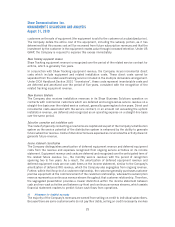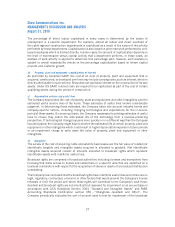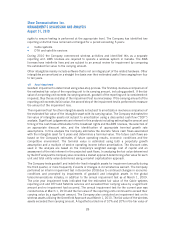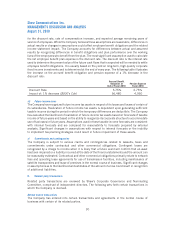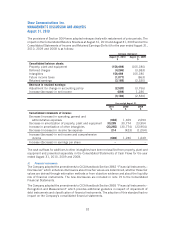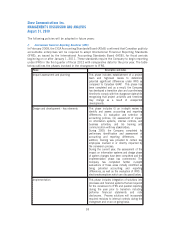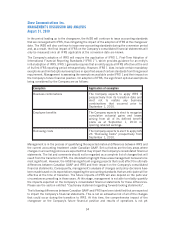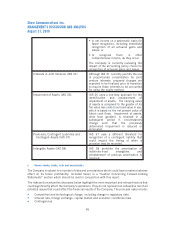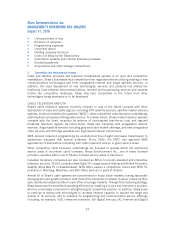Shaw 2010 Annual Report Download - page 38
Download and view the complete annual report
Please find page 38 of the 2010 Shaw annual report below. You can navigate through the pages in the report by either clicking on the pages listed below, or by using the keyword search tool below to find specific information within the annual report.
In the period leading up to the changeover, the AcSB will continue to issue accounting standards
that are converged with IFRS, thus mitigating the impact of the adoption of IFRS at the changeover
date. The IASB will also continue to issue new accounting standards during the conversion period
and, as a result, the final impact of IFRS on the Company’s consolidated financial statements will
only be measured once all IFRS applicable at the conversion date are known.
The Company’s adoption of IFRS will require the application of IFRS 1, First-Time Adoption of
International Financial Reporting Standards (“IFRS 1”), which provides guidance for an entity’s
initial adoption of IFRS. IFRS 1 generally requires that an entity apply all IFRS effective at the end
of its first IFRS reporting period retrospectively. However, IFRS 1 does include certain mandatory
exceptions and limited optional exemptions in specified areas of certain standards from this general
requirement. Management is assessing the exemptions available under IFRS 1 and their impact on
the Company’s future financial position. On adoption of IFRS, the significant optional exemptions
being considered by the Company are as follows:
Exemption Application of exemption
Business combinations The Company expects to apply IFRS 3
prospectively from its transition date and
elect not to restate any business
combinations that occurred prior to
September 1, 2010.
Employee benefits The Company expects to elect to recognize
cumulative actuarial gains and losses
arising from all of its defined benefit
plans as at September 1, 2010 in
opening retained earnings.
Borrowing costs The Company expects to elect to apply IAS
23 “Borrowing Costs” prospectively from
September 1, 2010.
Management is in the process of quantifying the expected material differences between IFRS and
the current accounting treatment under Canadian GAAP. Set out below are the key areas where
changes in accounting policies are expected that may impact the Company’s consolidated financial
statements. The list and comments should not be regarded as a complete list of changes that will
result from the transition to IFRS. It is intended to highlight those areas management believes to be
most significant. However, the IASB has significant ongoing projects that could affect the ultimate
differences between Canadian GAAP and IFRS and their impact on the Company’s consolidated
financial statements. Consequently, management’s analysis of changes and policy decisions have
been made based on its expectations regarding the accounting standards that we anticipate will be
effective at the time of transition. The future impacts of IFRS will also depend on the particular
circumstances prevailing in those years. At this stage, management is not able to reliably quantify
the impacts expected on the Company’s consolidated financial statements for these differences.
Please see the section entitled “Cautionary statement regarding forward-looking statements”.
The following differences between Canadian GAAP and IFRS have been identified that are expected
to impact the Company’s financial statements. This is not an exhaustive list of all of the changes
that could occur during the transition to IFRS. At this time, the comprehensive impact of the
changeover on the Company’s future financial position and results of operations is not yet
34
Shaw Communications Inc.
MANAGEMENT’S DISCUSSION AND ANALYSIS
August 31, 2010



